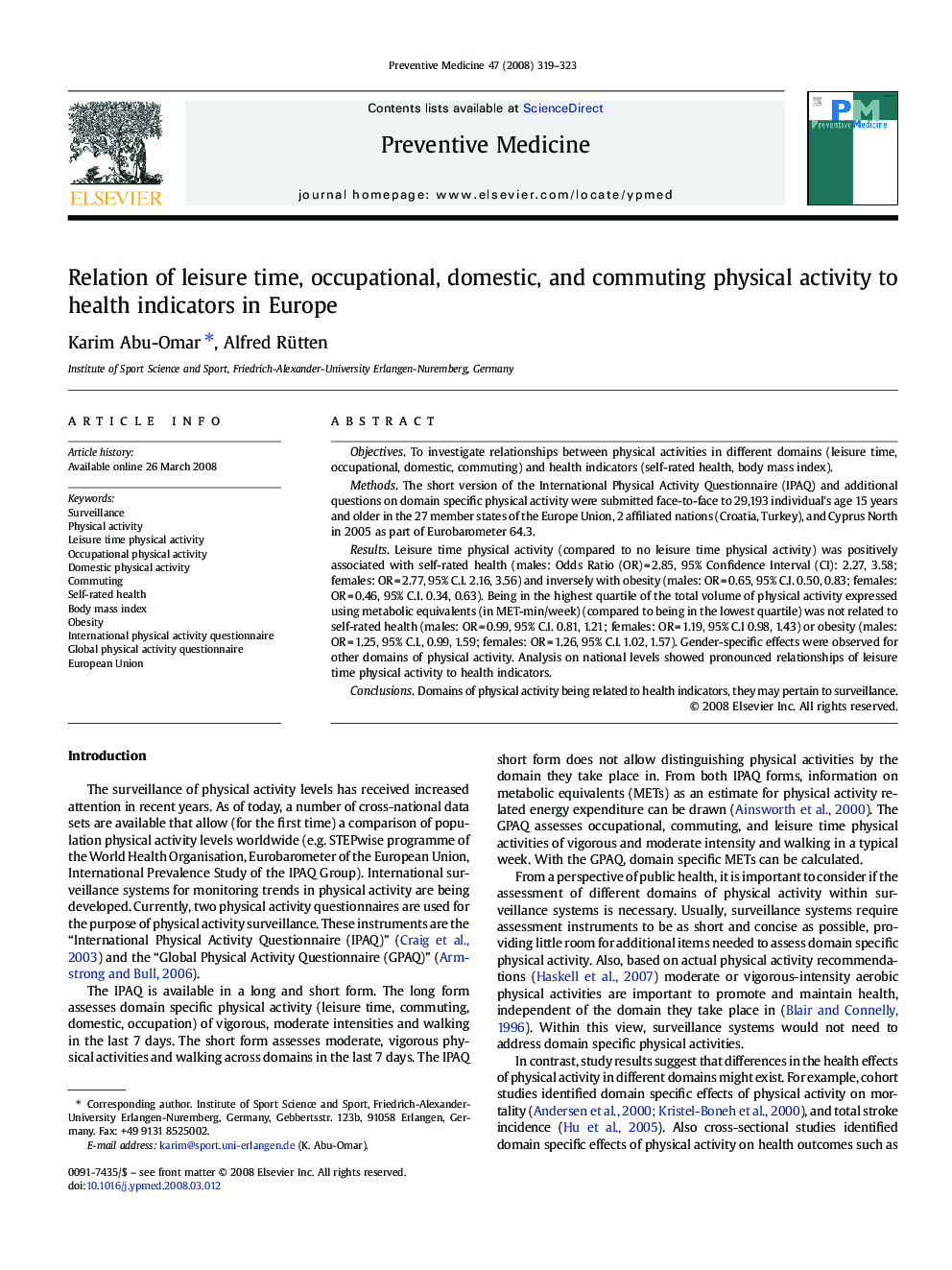| Article ID | Journal | Published Year | Pages | File Type |
|---|---|---|---|---|
| 3101628 | Preventive Medicine | 2008 | 5 Pages |
ObjectivesTo investigate relationships between physical activities in different domains (leisure time, occupational, domestic, commuting) and health indicators (self-rated health, body mass index).MethodsThe short version of the International Physical Activity Questionnaire (IPAQ) and additional questions on domain specific physical activity were submitted face-to-face to 29,193 individual's age 15 years and older in the 27 member states of the Europe Union, 2 affiliated nations (Croatia, Turkey), and Cyprus North in 2005 as part of Eurobarometer 64.3.ResultsLeisure time physical activity (compared to no leisure time physical activity) was positively associated with self-rated health (males: Odds Ratio (OR) = 2.85, 95% Confidence Interval (CI): 2.27, 3.58; females: OR = 2.77, 95% C.I. 2.16, 3.56) and inversely with obesity (males: OR = 0.65, 95% C.I. 0.50, 0.83; females: OR = 0.46, 95% C.I. 0.34, 0.63). Being in the highest quartile of the total volume of physical activity expressed using metabolic equivalents (in MET-min/week) (compared to being in the lowest quartile) was not related to self-rated health (males: OR = 0.99, 95% C.I. 0.81, 1.21; females: OR = 1.19, 95% C.I 0.98, 1.43) or obesity (males: OR = 1.25, 95% C.I., 0.99, 1.59; females: OR = 1.26, 95% C.I. 1.02, 1.57). Gender-specific effects were observed for other domains of physical activity. Analysis on national levels showed pronounced relationships of leisure time physical activity to health indicators.ConclusionsDomains of physical activity being related to health indicators, they may pertain to surveillance.
